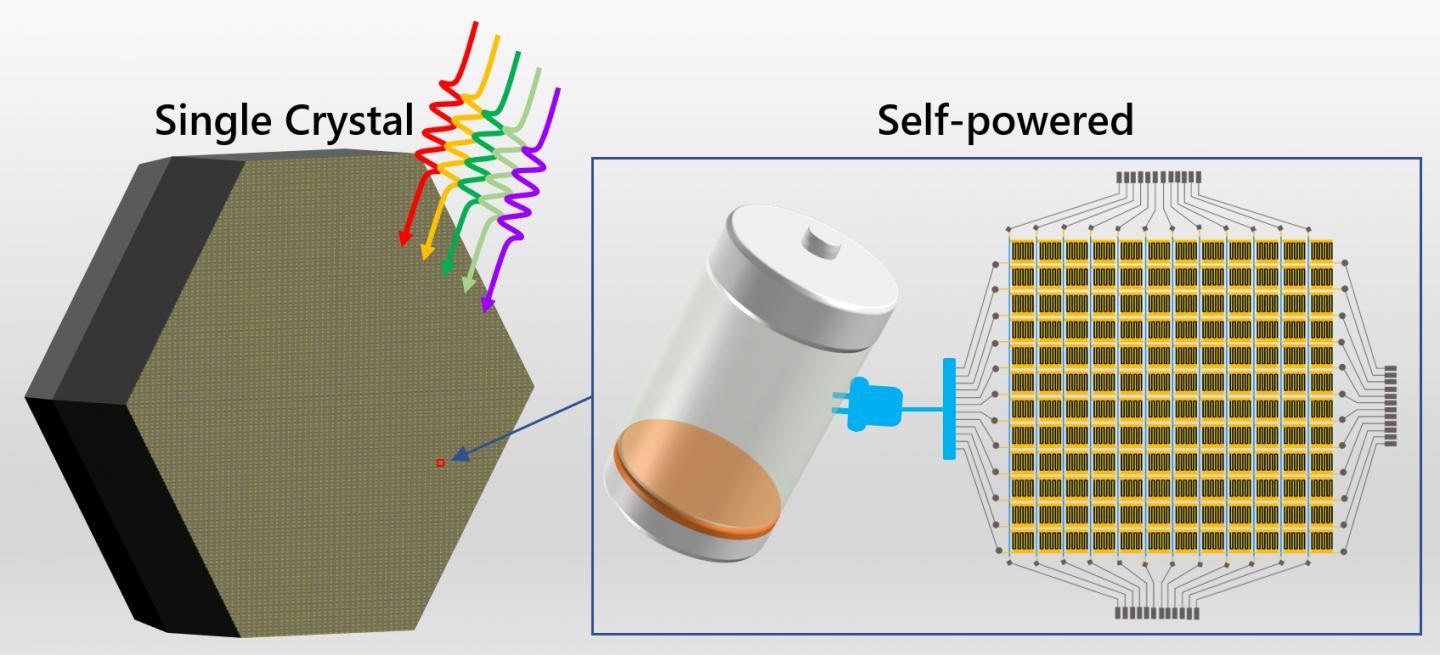Feb 12 2021
Multiple-cation and mixed halide (FAMACs) perovskites developed by adding Br/MA/Cs ions into the FAPbI3 perovskites are known to be the ideal compositions for use in high-efficiency photovoltaic and photoelectronic devices thanks to their reduced hysteresis, suppressed ion migration, and improved stability.
 Inch-sized high-quality perovskite single crystals formed by suppressing the phase segregation for applications in light-powered integrated circuits. Image Credit: Dalian Institute of Chemical Physics.
Inch-sized high-quality perovskite single crystals formed by suppressing the phase segregation for applications in light-powered integrated circuits. Image Credit: Dalian Institute of Chemical Physics.
But the actual composition, specifically the content of Cs in FAMACs perovskites, for sophisticated devices reported by various research groups, has not been so consistent.
Moreover, phase segregation into a yellow non-perovskite phase is usually noticed at the time of the crystallization process. This unwanted yellow phase serves as a trapping state or scattering center, with a negative effect on the charge carrier recombination dynamics and carrier mobility. This leads to a decline in the performance of the device.
A group of researchers headed by Professor Shengzhong Liu from the Dalian Institute of Chemical Physics (DICP) of the Chinese Academy of Sciences (CAS), together with Professor Yucheng Liu from Shaanxi Normal University and Professor Mercouri G. Kanatzidis from Northwestern University (Evanston), suggested an effective approach for achieving high-quality perovskite single crystals with a size of up to 5 inches.
The researchers used the huge and pure phase single crystals to develop high-performance self-powered integrated-circuit photodetectors. The study was published in the Science Advances journal.
The team chose a reducing agent (formic acid) to inhibit phase segregation at the time of the crystallization process to achieve very huge triple-cation mixed-halide perovskite single crystals.
This approach resulted in advanced perovskite single crystals with high charge mobility, long carrier lifetime, excellent uniformity, long-term stability, and long carrier diffusion distance, thus enabling high-performance self-powered integrated-circuit type photodetectors to be designed.
Furthermore, as the photodetector equipped with the crystal displayed high photoconductive gain, superior detectivity, huge responsivity, and fast response speed, a combined imaging system with even photo-response was developed using a 12 × 12 pixelated matrix of single-crystal photodetectors.
For instance, a 2 × 2-pixel matrix exhibited optimal discrimination between pixels upon selective illumination.
We believe that such a novel design will open new avenues for the applications of perovskite self-powered integrated circuits in devices relevant to imaging applications.
Shengzhong Liu, Professor, Dalian Institute of Chemical Physics, Chinese Academy of Sciences